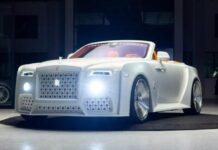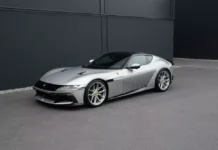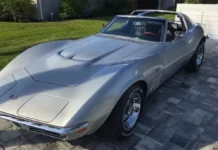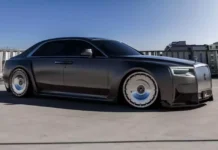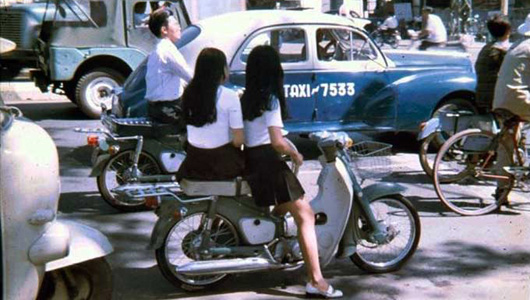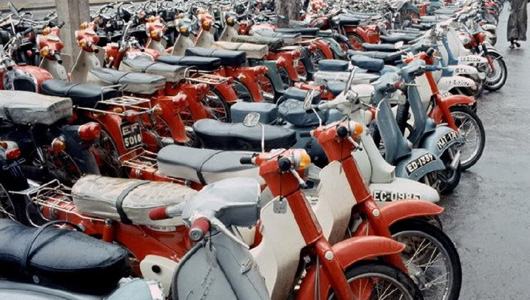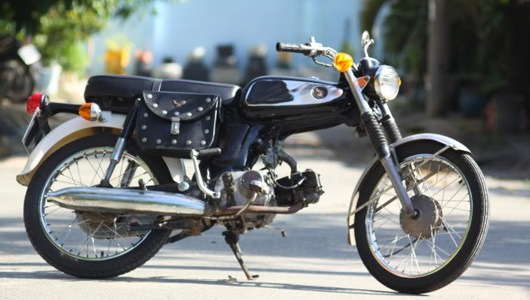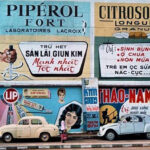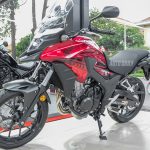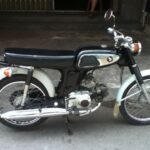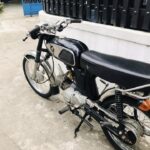Bicycles and scooters have long been the primary modes of transportation in southern Vietnam, both before and after 1975. This article offers a comprehensive overview of the scooters that were prevalent in southern Vietnam before 1975.
>> You can leave comments on this article at http://www.facebook.com/Autodaily
>> What did people in Saigon ride before 1975? (Part 1)
Honda 67, Cub, Dame – A Glorious Era
In the mid-1960s, Honda began gaining popularity, introducing some new and unfamiliar models. Initially, Honda motorcycles were imported by Americans for their own use but were eventually sold to Vietnamese buyers when they left the country.
One notable use of Honda motorcycles was by American pilots commuting between the aircraft parking lot and the base. These motorcycles offered a quicker alternative to walking, especially during emergency situations. Among the Honda models, the Honda S90 was particularly well-liked due to its attractive design, powerful engine, and distinctive sound.
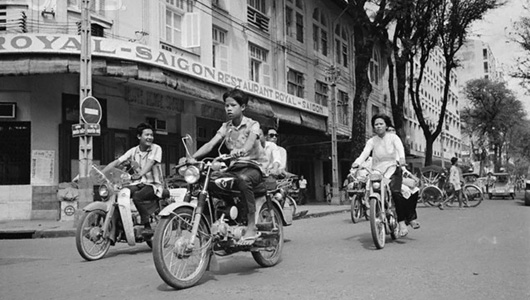
Other Honda models included the C110, S65 (also known as the S50), P50, and C50. The P50 had a unique design with the engine located near the rear wheel, directly driving the wheel instead of using a chain. This placement offered advantages such as reduced power loss and fewer parts. However, it also had drawbacks, including potential imbalance due to a lighter front end and a heavier rear end. Moreover, the lack of suspension made the bike vulnerable to wheel rim damage when going over speed bumps. The Honda Dame C50, introduced before 1965, featured the convenience of an electric starter. However, subsequent batches of Honda Dames had to be kick-started.
Officially imported in 1965, the Honda Dame (C50 model) quickly attracted attention in Saigon. Interestingly, despite its official name, people referred to it as “Honda dàn ông” (men’s Honda) instead of Honda Dame. The early presence of Honda Dames on the streets caused some confusion, with people stalling the engine while trying to shift gears. This unfamiliarity led to rumors that the Motobécane brand of Mobylette had employees purposely pushing Honda Dames on the streets to discredit the Japanese motorcycles.
The Honda Dame was specifically designed for women riders and featured an automatic clutch, eliminating the need to manually engage the clutch while shifting gears. The Suzuki Dame and Yamaha Dame models employed a similar design. In contrast, Japanese men’s motorcycles were built to resemble larger motorcycles, without pedals and with a kick-start lever. These models had crossbars on both sides for foot support, a right-side foot brake, left-side gear shift, left-hand clutch lever, right-hand front brake lever, and a fuel tank at the front.
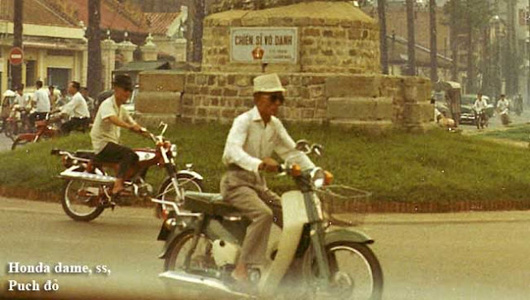
These motorcycles also featured two rubber pads on each side of the fuel tank, providing a comfortable resting place for the knees and enhancing balance. The throttle was light and smooth, unlike the heavier throttles found on “Western” motorcycles. The pedals were easy to kick-start. In summary, Japanese manufacturers prioritized user-friendly and convenient designs, ensuring a comfortable riding experience.
Honda gradually dominated the parking lots of old Saigon
Following the Honda Dame’s success, the Honda dàn ông 66 (SS50) was introduced. The SS stands for Super Sport. Released in 1966, this model featured narrow handlebars, reducing wind resistance. It lacked turn signals, offered a 5-speed gearbox, and could reach an impressive top speed of 90km/h for a 50cc motorcycle. The design reflected racing bike characteristics. However, due to its short handlebars, the model proved less practical for city riding.
In 1967, Honda released an updated version of the model with wider handlebars, turn signals, and front suspension with rubber covers. The top speed was capped at 80km/h. The 67 model (SS50E) gained fame for its powerful engine, impressive speeds, and widespread popularity in southern Vietnam, alongside the Honda Dame. Although Honda introduced other models later on, the Honda 67 remains the most renowned. Its powerful engine made it an ideal choice for towing carts, replacing the previously used German motorcycles.
Th? Ð?t (According to PL&XH/Source: Honda67)

